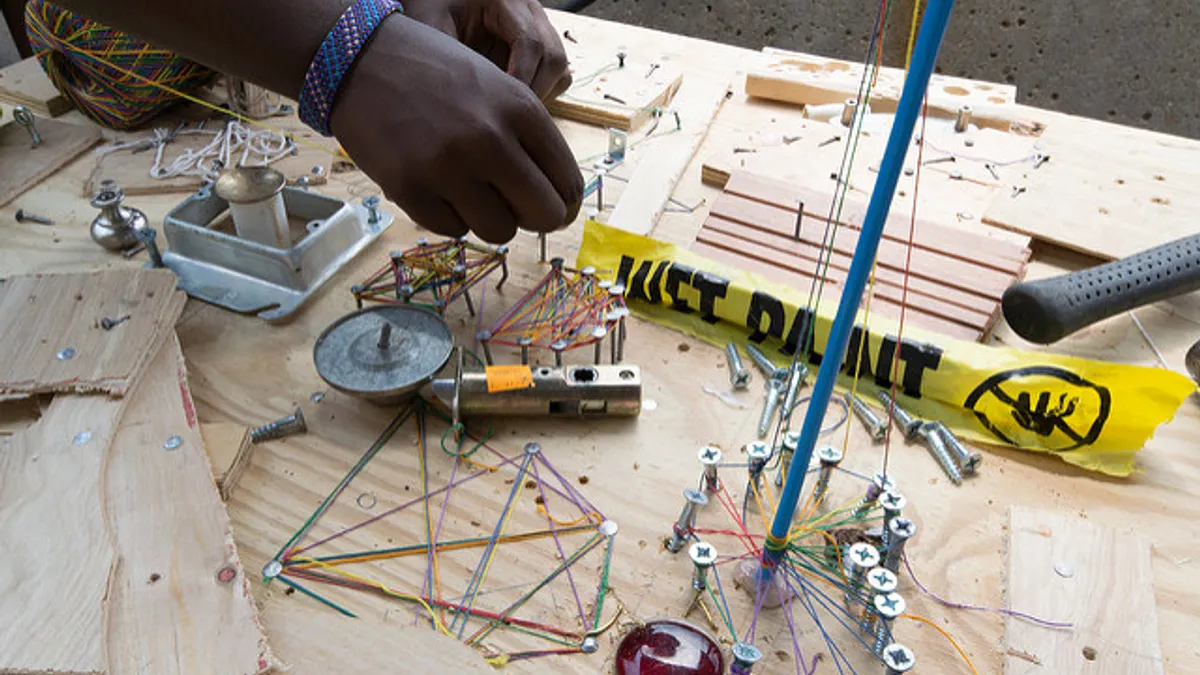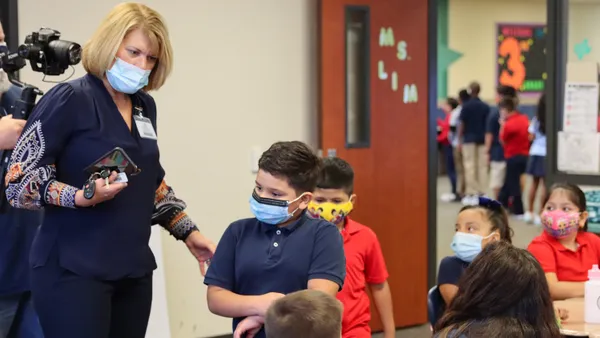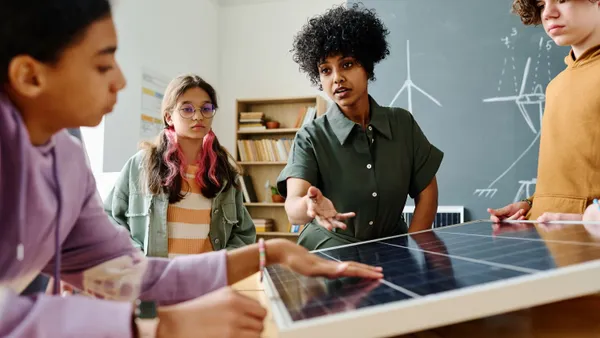When Montour School District Director of Innovation Justin Aglio and a team started thinking about creating a makerspace for students, they had big dreams. They wanted to spend up to $30,000 for a dedicated room, complete with a 3D printer and other impressive gadgets. Then they came to terms with their grant funding — a more modest $5,000.
The new plan became creating mobile maker kits for students, teachers, and parents to check out for home and classroom use.
"It’s not like ‘we’re leaving class to go to this fun maker space,' but 'we're bringing the fun maker space back to the classroom,'" Aglio said of the concept. The district used part of its grant money to buy tools and supplies and relied on a community maker drive to collect additional items.
The Montour School District, near Pittsburgh, is one of many across the country embracing the value of “making” on student development and engagement.
Aimee DeFoe is a second grade teacher and assistant principal in Pittsburgh’s Kentucky Avenue School, an independent, nonprofit school that is designed around project-based learning. DeFoe has been an advocate for giving students opportunities to invent and create things for years.
When students build things and troubleshoot their designs, they are not simply learning how to create, they are developing a mindset that favors testing things out and accepts failure on the path to success, DeFoe says. Students learn the real-world skills that working engineers and scientists use every day.
“It’s way different from reading something and regurgitating it on a test,” DeFoe said.
This is the National Week of Making, a celebration chronicled with Twitter hashtags #NationOfMakers and #WeekofMaking. The University of DC hosted the second annual kick-off, the National Maker Faire, on June 18-19, featuring makers from around the country and representatives of federal agencies and departments.
At Aglio’s school, classes are out of session for the summer, but teachers will host the second annual STEAM Camp to go along with the National Week of Making, giving students an opportunity to explore robotics, drones, coding, Lego architecture, graphic design and engineering.
This type of event is helping Montour School District get students interested in science, technology, engineering, arts, and math early. In the district’s high school, engineering and computer science classes are dominated by boys and most of them are white, Aglio said. The district is committed to working with children as young as kindergarten, and even before, to get them interested in STEAM and then keep up that interest all the way through high school. That means being intentional about promoting classes and recruiting broadly for school events.
In Los Angeles, Luz Rivas started DIY Girls to address the gender and ethnic imbalance in STEAM. As a Latina engineer, Rivas makes up just 2% of the working scientist/engineer community, and as a Los Angeles native, Rivas wanted to start in her hometown with a course correction.
Back in 2011, Rivas didn’t have much money to get her group off the ground, and the facilities at her disposal were limited. But Rivas gathered the tools she had and could borrow, adding low-cost and surplus electronics to the mix, and started giving girls the opportunity to make things. More than 1,200 girls in the city have participated in after-school and in-school programs since 2012. And some of them describe important transformations that will affect the rest of their lives.
One high school student, Blanca, is quoted on the DIY Girls website: “As a little girl, my parents always told me that building things and using tools were things only men can do,” she said. “Now I know they’re wrong.”
Lewis and Clark Elementary School is Missouri has a MakerSpace in the library. Shattuck-St. Mary’s School in Faribault, MN, calls its two-story space the weCreate Center. And “Innovation Labs” have opened at the Ross School in East Hampton, NY; the Nueva School in Hillsborough, CA; Quest Academy in Palatine, IL; and Cushing Academy in Ashburnham, MA.
Schools wanting to catch up with the trend may want to jump into a major investment, but DeFoe recommends starting small. Teachers and administrators can test the waters with maker projects and gauge support before turning to a dedicated space. That support — at all levels of the school community — is critical.
“If you don’t have that, the space doesn’t matter,” DeFoe said.














